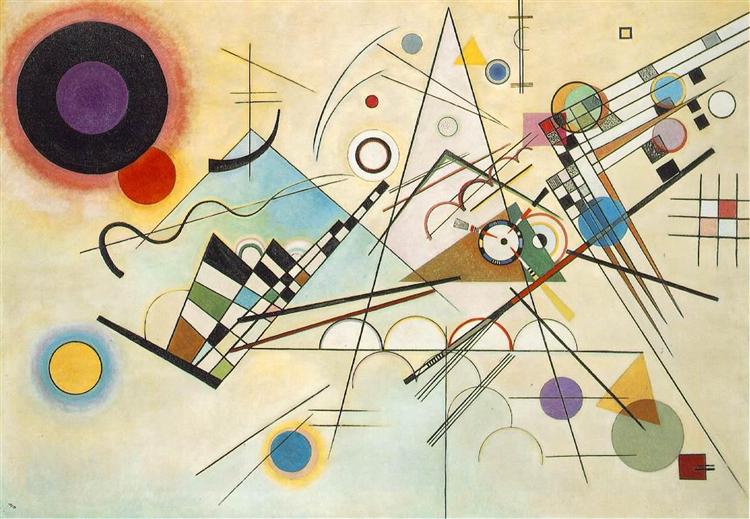Vasily Kandinsky is one of my favorite artists. This isn’t just because of his revolutionary
creativity but more because he did not focus on art until late in life and
still had such a lasting influence on artists decades later. He was born in 1866 in Moscow and studied law
and economics. It was not until he was
thirty and visited Paris that he was so inspired that he quit law to become an
artist. He moved to Munich, a center for experimental art. Another thing that is very interesting about
Kandinsky, and many artists of that time, was their involvement in more
organized art movements, from Phalanx, to Neue Kunstler Vereingigung (New
Artist Association), which also included Franz Marc. It was during this period that Kandinsky
began exploring nonobjective painting and become the “father of abstract
painting”. In 1911, Kandinsky, Marc, and
several other artists formed Der Blaue Reiter (The Blue Riders).
Also in 1911, Kandinsky wrote a book called Concerning the Spiritual in Art. He was studying the “dematerialization” of the object in art and felt that art should represent the spiritual rather than the material and mirrored the music of the time. He began naming his paintings “composition”, Improvisation” and such.
Also in 1911, Kandinsky wrote a book called Concerning the Spiritual in Art. He was studying the “dematerialization” of the object in art and felt that art should represent the spiritual rather than the material and mirrored the music of the time. He began naming his paintings “composition”, Improvisation” and such.
With the beginning of World War one, Kandinsky moved back to
Russia and did not return to Germany until 1921 when he joined the faculty at
Bauhaus. It was during this period that
his work moved to more geometric abstraction.
He also wrote a textbook, Point and Line to Plane. His work of this
period lines, and curving shapes with defined edges, as in Composition VIII (below).

and change with the times. He didn’t try to “say” something in his art, but to make the viewer feel.

No comments:
Post a Comment